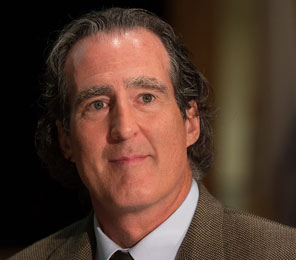 |
|
| Craig Mello is traveling to Washington to discuss his research at the invitation of Congressional Biomedical Research Caucus. | |
Nobel Laureate Craig C. Mello, PhD, Howard Hughes Medical Institute Investigator, Blais University Chair in Molecular Medicine and distinguished professor of molecular medicine and cell biology, is traveling to Washington, D.C., this week to brief the Congressional Biomedical Research Caucus (CBRC), on the future of his research and RNAi.
The CBRC, a bipartisan group of 83 Congressional members interested in basic and clinical biomedical research, serves to inform and educate Congress about advances in health care made by investment in biomedical research. The caucus supports the efforts of the congressional committees and members of Congress with jurisdiction over the National Institutes of Health (NIH), the National Science Foundation (NSF), science research and health issues.
The meeting with Dr. Mello was organized by the Coalition for the Life Sciences, a group of non-profit professional organizations working together to foster public policies that advance basic biological research.
While in Washington, Mello will meet with the Massachusetts Congressional delegation to champion the continuation of the longstanding bipartisan commitment to the NIH that has established the United States as the world leader in medical research and innovation. Sen. John Kerry and Reps. Ed Markey and Jim McGovern are hosting Mello, who will also meet with Sen. Tom Harkin of Iowa, a member of the appropriations committee.
The NIH estimates that automatic spending cuts—the result of the debt reduction law passed this year—could jeopardize roughly 2,300 NIH grants in 2013. These are grants that the NIH would otherwise have expected to fund, according to NIH Director Francis S. Collins, MD, PhD. If nothing is done, it is expected that NIH and other sources of medical research funding would undergo cuts of 7.8 percent, which translates into $2.39 billion in cuts to NIH alone and $3.6 billion to medical research in total. Because the debt reduction law has a 10-year timeframe, substantial reductions throughout the next decade loom.
Over the years, the partnership between NIH and U.S. medical schools and teaching hospitals has substantially improved the health of the American people, who are now living healthier and longer lives. As a result of NIH-funded research:
· Once, four out of five children with leukemia died. Today, four out of five survive.
· Rotavirus, a disease that kills 600,000 children a year worldwide, is now being stopped with two safe and effective vaccines.
· Vaccines for pneumonia, meningitis and acute ear infections—diseases that once killed up to one million children worldwide every year—have been developed.
At the same time, NIH-funded research has helped to strengthen local and regional economies. In Greater Worcester, UMass Medical School—a major NIH-funded research center—has become the epicenter of an emerging biomedical cluster. At a time when a declining industrial base is severely impacting many other older industrial centers, Greater Worcester is now home to 162 biomedical companies employing 16,441 individuals, with an annual economic impact of more than $2.1 billion. Abbott Bioresearch Center, for instance, has cited the presence of UMMS and its research enterprise as a major factor in its decision to locate to Worcester, where the company now employees more than 700 people.